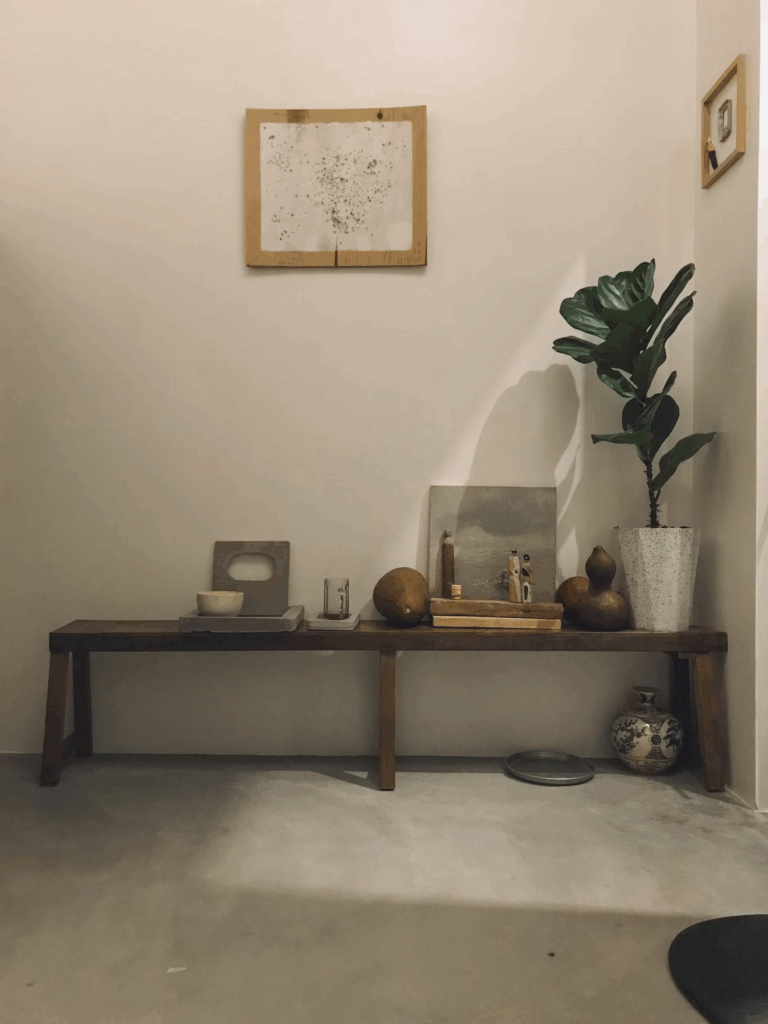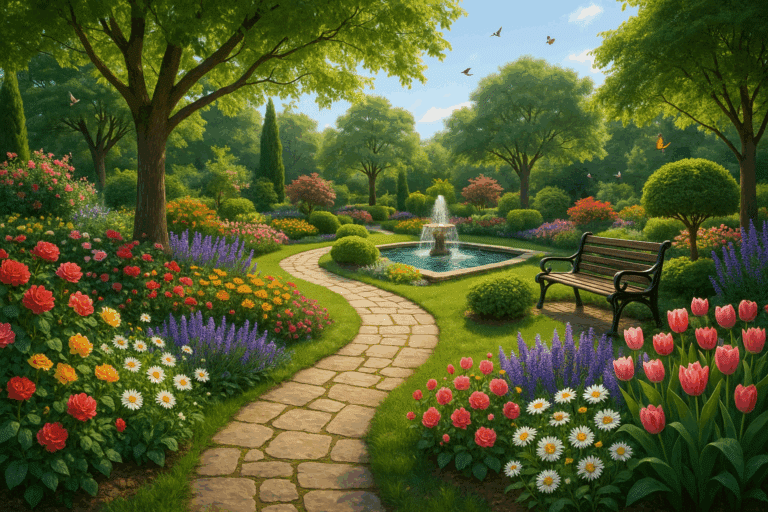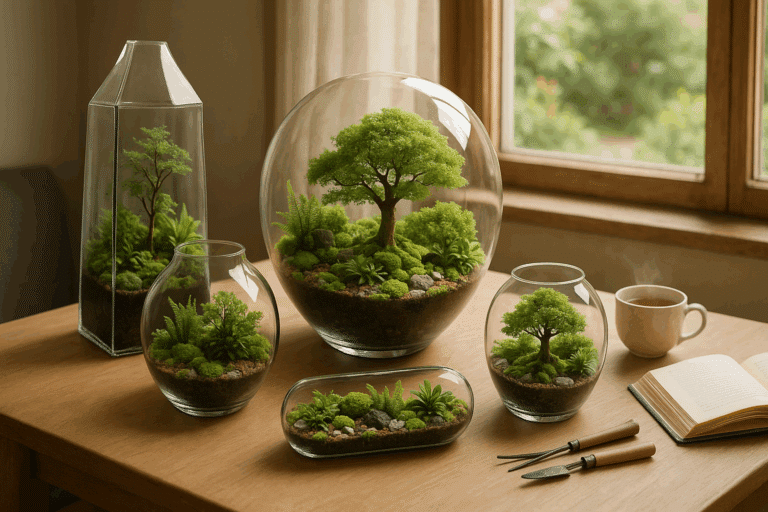Picture an elegant fusion of nature and art right within your domestic arena that not only enhances your décor but also elevates your mood. The charming prospect you’re envisioning is a reality we aim to bring into your home through the sophisticated art of indoor bonsai.
In the realm of interior design and décor, one trend that has gained considerable momentum is the inclusion of indoor plants. But why settle for the mundane when you can venture into the alluring world of bonsai? These miniature, yet powerful, masterpieces embody grace and serenity, inviting an energy of tranquility into your space.

Within the confines of this piece, we will guide you through the process of transforming an ordinary corner of your house into an enchanting indoor bonsai corner. We will delve into the intricacies of choosing the right bonsai, the placement, and the maintenance it requires, providing comprehensive information to ensure your bonsai thrives and flourishes.
In addition, we will explore the aesthetics of styling your indoor bonsai corner. From selecting the perfect bonsai pot that complements your home décor to arranging the elements around it, creating a cohesive look that exudes tranquility and sophistication. We also touch upon the significance of this ancient art and how it impacts not just your space, but your wellbeing.
Embark on this enlightening journey with us and discover the profound impact of having a bonsai corner in your home. It’s much more than just home décor; it’s a lifestyle, a commitment to nurturing nature, and a testament to patience and resilience. Revel in the awe-inspiring beauty of these miniature masterpieces and elevate your home décor to a realm of elegance and tranquility.
Understanding the Art of Indoor Bonsai: Cultivating Tranquility and Nature in Your Living Space
Introduction: The Harmony of Nature Indoors
The ancient art of bonsai invites nature into our homes in a deeply meaningful way. More than just a decorative plant, a bonsai is a living sculpture, representing patience, balance, and harmony. While bonsai cultivation began in ancient China and flourished in Japan, its principles have spread globally, especially as urban dwellers seek green oases within concrete jungles. Bringing a bonsai indoors offers not only aesthetic beauty but also a spiritual and therapeutic connection to nature.
History and Philosophy of Bonsai
The word “bonsai” is derived from the Japanese words bon (tray) and sai (plant), meaning a plant in a shallow container. However, bonsai as an art form has roots in Chinese penjing from over 2,000 years ago. It eventually reached Japan, where it evolved into a highly refined art symbolizing harmony between man, nature, and the cosmos.
Bonsai reflects the philosophy of Wabi-Sabi—the beauty of imperfection and transience. It embraces natural asymmetry, subtle details, and the passage of time, mirroring life’s inevitable changes.
Understanding Indoor Bonsai
While many traditional bonsai are suited for outdoor environments, a carefully curated selection of species can thrive indoors. Indoor bonsai are ideal for modern homes and offices where outdoor gardening may not be practical. Key indoor species include:
Ficus retusa: Hardy and adaptable
Jade (Crassula ovata): A succulent with minimal watering needs
Chinese Elm (Ulmus parvifolia): Easy for beginners
Serissa (Serissa foetida): Known for delicate white flowers
These species are adaptable to lower light and humidity conditions, making them perfect candidates for your indoor oasis.
Selecting the Right Bonsai Species for Indoor Spaces
Choosing a bonsai is a personal decision. Beyond plant care needs, consider the aesthetics and symbolism each tree conveys. Some trees symbolize resilience (pine), prosperity (jade), or calm (maple). Evaluate your available space, light sources, and climate before selecting your tree.
Setting Up an Indoor Bonsai Environment
An indoor bonsai corner should reflect nature and tranquility. Consider a minimalist setup:
A simple wooden table
Neutral-colored pots
Decorative pebbles or moss
Natural backdrops like bamboo or linen panels
Surround your bonsai with natural elements to enhance its presence.
Light, Temperature, and Humidity Considerations
Light: Bright, indirect sunlight for 4–6 hours daily. Use full-spectrum grow lights during dark seasons.
Temperature: Maintain 15°C–25°C (59°F–77°F). Avoid placing near heaters or vents.
Humidity: Maintain 50%–70%. Use a humidity tray or humidifier nearby.
Daily and Seasonal Bonsai Care
Daily: Check soil, mist leaves, rotate for light balance
Spring: Repot, prune new shoots
Summer: Increase watering and humidity
Autumn: Reduce watering, clean and reshape
Winter: Use artificial light, monitor for pests
Pruning, Wiring, and Shaping Techniques
Pruning controls growth and shapes the silhouette. Use aluminum or copper wire for gentle shaping. Remove wires after 6–8 weeks. Avoid cutting roots during non-repotting seasons.
Watering Wisdom: Avoiding Common Pitfalls
Water only when the top inch of soil is dry. Use:
Submersion method: Soak the pot in water for 10 minutes
Top watering: Use a watering can with a narrow spout
Ensure pots have drainage holes.
Fertilization and Soil Composition
Fertilize every 2–4 weeks in growing season. Use organic fertilizer or balanced bonsai blends. Ideal soil mixes:
Akadama: Water retention
Pumice: Aeration
Lava rock: Drainage
Repotting: When and How to Refresh Your Bonsai
Repot young trees every 2–3 years, mature trees every 4–5 years. Do it in early spring. Trim roots, refresh soil, reposition, and water well after repotting.
Embracing Aesthetics: Bonsai as Living Art
Each bonsai is a reflection of the grower’s inner landscape. Add moss, stones, or ceramics. Use symmetry and contrast. Let your bonsai be your personal expression.
Creating a Zen-Inspired Indoor Garden
Pair bonsai with:
A sand garden
Stones and pebbles
Mini water fountains
Bamboo scrolls or soft lighting
This enhances meditation, reflection, and mindfulness.
Bonsai in Interior Design: Styles and Themes
Incorporate bonsai into:
Modern rooms with clean pots
Boho spaces with macramé
Scandi interiors with pale wood and simplicity
Tools and Accessories for Bonsai Enthusiasts
Must-haves include:
Bonsai shears
Root rake
Concave cutters
Wire spool
Misting bottle
Soil scoop
Keep tools clean and stored in a dry place.
Common Challenges and Solutions
Leaf drop: Caused by temperature swings
Pests: Spray neem oil or soap
Root rot: Ensure drainage
Slow growth: Check soil and light
Integrating Bonsai into Daily Rituals
Caring for bonsai can become part of your routine—like morning misting or evening pruning. It encourages focus, care, and balance in your day.
Bonsai for Kids and Beginners
Teach kids patience with their own tiny tree. Let them prune under supervision and name their tree. It’s educational and calming.
Symbolism in Bonsai
Each tree tells a story:
Pine = Strength
Maple = Change
Juniper = Purity
Cherry blossom = Impermanence
Feng Shui Tips for Bonsai Placement
East = Health
Southeast = Prosperity
Avoid bathrooms or closets
Use ceramic stands to elevate
Sustainability in Bonsai
Bonsai promotes:
Water conservation
Minimalism
Longevity over disposability
Use compostable soil and recyclable pots when possible.
Joining the Bonsai Community
Find local or online bonsai clubs. Attend exhibits, take workshops, join forums like BonsaiNut or Reddit Bonsai. Share photos and growth logs.
Bonsai in Wellness Spaces
Add to therapy rooms, yoga studios, or meditation areas. The plant’s stillness creates a grounding visual, reducing stress.
Mastering Bonsai as a Lifelong Journey
Advanced growers create landscapes (saikei) or artistic displays. Others craft bonsai forests or seasonal displays. The tree becomes a life companion.
Final Thoughts: Nurturing Stillness in a Noisy World
The bonsai is more than a tree in a pot—it is a philosophy. It teaches patience in pruning, awareness in watering, and pride in progress. As we slow down to care for something living, we return to ourselves.
Setting Up Your Indoor Bonsai Corner
After selecting the right tree, the next step is creating an ideal environment for your bonsai to thrive. The setup should mimic the tree’s natural habitat as closely as possible. Here are some factors to consider:
Light
Light is a crucial element in bonsai cultivation. While some indoor bonsai varieties can tolerate low light conditions, most still require at least a few hours of sunlight each day. Therefore, the bonsai corner should ideally be near a window that receives plenty of natural light.
Temperature and Humidity
Most indoor bonsai trees prefer temperatures between 15 to 25 degrees Celsius. It’s essential to maintain a consistent temperature, as sudden changes can shock the tree. Also, bonsai trees prefer a higher humidity level, which can be achieved by placing a humidity tray under the pot.
Caring for Your Bonsai
Bonsai care is an ongoing commitment that goes beyond just keeping a plant alive—it’s about nurturing a living artwork. The essence of bonsai lies in the bond you develop with your tree through daily attention and long-term care. Ensuring the tree’s health involves regular watering, pruning, fertilizing, repotting, and observation.
Watering
Watering is more of an art than a science when it comes to bonsai. Overwatering can lead to root rot, while underwatering can cause the tree to dry out and suffer. The general rule is to water the tree when the top layer of soil feels slightly dry to the touch—but this varies depending on the species, the season, and the pot’s size.
Use a fine-spout watering can to water thoroughly until water drains from the bottom. For smaller bonsai or delicate root systems, bottom-watering (placing the pot in a tray of water) can be effective. Monitor your tree daily, especially in summer or under grow lights.
Pruning
Pruning involves trimming the leaves, branches, and roots to maintain the tree’s miniature size and desired shape. There are two primary types of pruning: maintenance pruning, which refines shape and encourages compact foliage, and structural pruning, which defines the tree’s overall design. Use sharp bonsai shears and cut just above a node to direct future growth.
Occasional wiring may be needed to train branches into specific angles or curves. However, wire should be monitored frequently to prevent it from cutting into the bark as the tree grows.
Embracing the Aesthetics of Bonsai in Interior Design
The incorporation of bonsai in interior design is more than just a decoration—it represents a fusion of nature, patience, and artistry. The indoor bonsai corner can serve as a mindful centerpiece, inviting a sense of serenity, intention, and beauty into the room. Whether it’s placed near a reading nook or atop a minimalist console, the bonsai’s presence reminds us to slow down and observe the small wonders of growth.
Creating a Zen Corner
Creating a Zen corner with a bonsai tree can be a great way to bring tranquility into your home. This setup can include elements such as stones, sand, and miniature figurines, which not only complement the bonsai but also enhance the overall Zen feel.

Pairing with Other Decorative Elements
Bonsai trees can also be paired with other decorative elements. For example, a bonsai tree can be placed on a wooden table alongside a stack of books, a candle, or a stylish lamp. This setup creates an elegant, sophisticated aesthetic.
In summary, an indoor Bonsai corner can truly transform your space, blending style, culture, and nature in an unparalleled way. These miniature masterpieces not only elevate your home decor but also offer a relaxing hobby that helps to cultivate patience and mindfulness. Their intricate designs and unique growth patterns introduce an element of surprise and excitement in your daily life, as you watch your personal ecosystem evolve.
Incorporating Bonsai into your home does not require vast amounts of space or specialized knowledge. With careful selection, regular care, and a dedication to nurturing your Bonsai, you can create a captivating corner that can become your sanctuary.
The beauty of Bonsai lies in its versatility. It can fit seamlessly into any interior design style, from minimalist to bohemian, making it a timeless addition to your home. Moreover, Bonsai’s rich history and cultural significance add an intriguing story to your space, inviting conversation and appreciation.
Therefore, consider investing in an indoor Bonsai corner. It’s not merely about beautifying your home; it’s about embracing a lifestyle that celebrates growth, harmony, and balance. So, welcome the enchanting world of Bonsai into your home and let it transform your space into a testament of your unique style and personality. 🌱🏡💚



